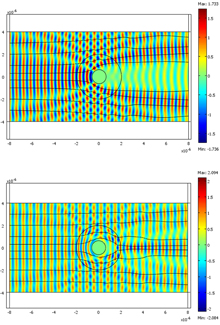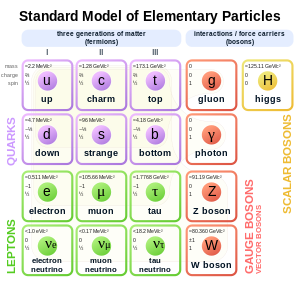TIME
05:54

Pulverized Asteroid around Distant Star Was Full of Water
Pulverized Asteroid around Distant Star
Was Full of Water
The first discovery of
a rocky, watery object beyond our solar system shows how planets might get
their oceans

OCEAN BEARER: The oceans on Earth and other rocky planets likely arrived via impacting asteroids and comets. Now, astronomers have spotted the remains of a watery asteroid around a distant star that could represent just such an ocean bearer.Image: Mark A. Garlick, space-art.co.uk, University of Warwick and University of Cambridge
A
decimated planetary system around a distant star holds the relics of a giant
asteroid that may have once been flooded with water. The finding
offers intriguing clues as to how planets become habitable, and may also
provide an unsettling peek at what our own solar system might be in for.
This system lies 170
light-years away and is centered on a star, GD 61, that is nearing the end of
its life. It is a white dwarf—the dense hulk left over after a star has used up
its fuel for nuclear fusion and cast off its outer gaseous layers into space.
These stars start out roughly the size of the sun, and end up condensed into a
sphere about the size of Earth.
Astronomers
did a bit of planetary forensics on GD 61, which is surrounded by rubble—the
remains of a large asteroid orbiting the star that seems to have been kicked
into a close orbit, where the white dwarf’s strong gravity ripped it to shreds.
Some of the asteroid’s remains are now scattered over the surface of the star,
where they show up as chemical signatures in the light of thewhite dwarf.
The researchers used
the Hubble Space Telescope’s Cosmic Origins Spectrograph to observe GD 61 and
split its light into constituent colors, revealing the chemicals it contains.
They found magnesium, iron, silicon and other heavy elements, which wouldn’t
exist naturally on the surface of a white dwarf, suggesting that they fell onto
the star from an orbiting object. The researchers also found a huge excess of
oxygen—an amount, they say, that indicates the asteroid polluting the star’s
surface was originally composed of 26 percent water. That’s pretty wet—Earth,
by contrast, is only 0.02 percent water. “This work marks the first detection
of water-rich rocks in exoasteroids, and is an important step in developing a
comprehensive picture of exoplanetary systems,” says Kevin France of the
University of Colorado at Boulder, who wasn’t involved in the research.
The
find could be significant, because theorists think Earth, having formed too
close to the sun for water to survive, got its oceans from just such large, wet
asteroids that impacted it long ago. “We’ve got the same kind of object which probably delivered Earth’s
oceans, and we found this around another star,” says research leader
Jay Farihi at the University of Cambridge in England. The discovery, he says,
is a step in the quest to find habitable worlds, and maybe even life, beyond
Earth. “This goes beyond planets in the habitable zone. We have some actual
chemistry that tells you the ingredients for habitable planets were there.”
Some experts aren’t
convinced that the oxygen found on the surface of the white dwarf is a clear
sign that water existed on an orbiting asteroid, however. “The link of the
pollution of a white dwarf to the inventory of water in an earlier planetary
system is a very interesting scientific question still under investigation,”
says exoplanet researcher Lisa Kaltenegger of Harvard University and the Max
Planck Institute for Astronomy in Germany, who was not involved in the
research. Claire Moutou, another exoplanet specialist at the Laboratory of
Astrophysicsof Marseille in France, agreed. “I find the analysis/conclusions of
the paper reasonable, as far as the amount of oxygen available to lie in H2O
molecules is concerned. The interpretation of the origin of this water content
is more speculative.”
The
scientists behind the project, which is detailed in the October 11 issue of Science, say they took pains to verify that the
chemicals they see really do prove the destroyed asteroid had water. They
observed the star GD 61 in many wavelengths through many telescopes, including
NASA’s Spitzer Space Telescope and two instruments on the W. M. Keck
Observatory in Hawaii, along with Hubble. “The authors seem to have done a
careful job of cataloguing the elements and searching for reasons to explain
away the oxygen excess,” says debris disk expert John Debes of the Space
Telescope Science Institute in Baltimore. “The detection of hydrogen in
addition to the oxygen is a really convincing signature of water.” The finding
sheds light on how planets form and evolve, adds Brice-Olivier Demory, an
exoplanet researcher at the Massachusetts Institute of Technology who also was
not involved in the research. “This is a startling result strengthening the
fact that water can be found in a very diverse range of environments.”
And water is
just one of the mysteries about this system. Scientists don’t know for sure if
GD 61 had, or has, planets, but they say a giant planet most likely pushed the
asteroid in toward its doom near the white dwarf. And they can’t tell how big
the asteroid was that deposited this detritus on the star—based on the amount
of pollution in the white dwarf’s atmosphere, the researchers estimate the
asteroid was at least 90 kilometers wide, but could have been much larger. That
would put it in a class of objects known as minor planets, similar to Ceres and
Vesta in our own solar system, which are also thought to contain large amounts
of water stored under their rocky crusts in the form of buried ice.
The planetary graveyard around GD 61 may be a vision of what’s
to come for the sun and its planets in the far future. The sun, like 98 percent
of the stars in the galaxy, will also become a white dwarf eventually, and its
ferocious gravity will probably strip Earth and other inner planets of their
heavy elements. It’s not a pretty picture, but, as Farihi says, “we have five
billion years to work on that.”







.jpg)
.jpg)
.jpg)
.jpg)
.jpg)
.jpg)
.jpg)
















